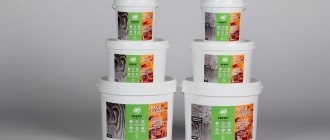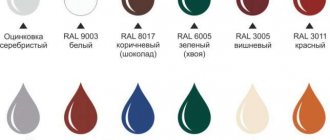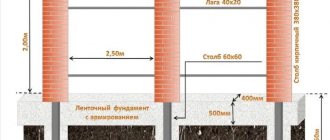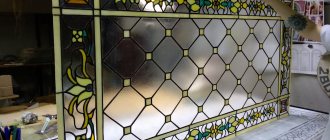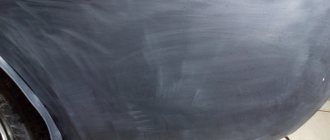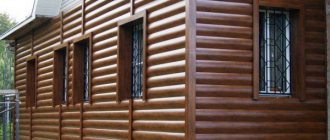The durability of the fence is determined not only by the quality of raw materials, compliance with the installation sequence, but also by timely protection of the material. Painting a metal fence refers specifically to this type of work. It helps prevent the development of corrosion and gives the structure beauty and neatness.
Users often search for:
- What paint is best to paint a wooden fence?
- How to attach corrugated sheets to a fence
Suitable types of primers
The main purpose is to protect metal from corrosion and environmental influences. Helps strengthen the structure, increases the degree of adhesion. Apply before painting.
Depending on the composition and technical characteristics, it happens:
- Isolating. This includes primers marked EP-0010, GF-021. The first is epoxy putty used to level the metal surface. It is characterized by high strength, adhesion, resistance to moisture and chemical solutions. The second is used as a pre-treatment of metal before painting with enamel. Contains anti-corrosion ingredients.
- Phosphating. VL-02 belongs to this category. Suitable for all types of metal. The product is greenish-yellow in color. Apply after cleaning the surface from dirt, dust, and degreasing.
- Passivating. These include GF-0119. The base is alkyd varnish with the addition of anti-corrosion and stabilizing substances. Tolerates temperature changes well. Has high adhesion. Color – red-brown. Apply before painting with enamel.
- Protective. This is the primer EP-0284. Forms a durable film on the surface, which makes the structure resistant to mechanical damage, moisture and rust development.
- Inhibitory. Variety – EP-0180. Suitable for processing ferrous metals and rusty surfaces. Stops the development of corrosion. Reliably protects the product from moisture and environmental influences. Color – red with a brownish tint.
Photo: preliminary priming of pillars before applying paint
Separately, it is worth highlighting the anti-corrosion primer marked EP-0199, brown in color. Suitable for processing any metal elements, both new and with traces of rust. Reliably protects the material, increasing service life and resistance to the external environment.
Thematic material:
- Making a chain-link fence
- Brick fence with corrugated board
What fence color to choose according to Feng Shui
To ensure harmony and arrangement of the courtyard, it is worth painting all the main elements in accordance with Feng Shui recommendations. As for the fence, the Taoist practice of designing space advises starting with it, because it is the first barrier, protection from the outside world and negative energy.
Feng Shui believes that a fence attracts different types of energy forces, so the mood in the family, the number of conflicts, and harmony in the house will depend on its color. It is worth considering the main colors for fences to understand their impact on residents.
Black
You should not paint the fence black; it will provide the area with a gloomy, oppressive atmosphere. By constantly contemplating the fence, a person himself reduces the amount of positive Chi energy, while increasing the negative influence of bad Chi energy.
White
From a practical point of view, a white fence is also not a good option. Of course, it symbolizes purity and tenderness, but in relation to energy it represents vacuum and death. The abundance of white color leads to depletion of the energy forces of household members.
Blue
A blue fence slightly reduces a person’s strength and energy activity, as it brings an atmosphere of relaxation. You can use blue to paint a fence only if a person needs calmness, a reduction in the feeling of chaos, or too violent energy.
Violet
This color is a symbol of greatness and excellent mental abilities. It is great for painting hedges and increases the flow of positive Qi energy.
Green
Green is ideal for south-facing fences and also looks great on the inside of the fence. It gives harmony and tranquility to the entire area, and triggers a restorative function. Green will outline the area like a hedge and enhance the feeling of closeness to nature. Experts especially advise using it where there is a shortage of bushes and trees.
Yellow
Bright yellow color can cause aggressive behavior, irritability, anger, as it carries masculine Yang energy. But soft shades of yellow and golden tones will give cheerfulness and optimism; they are perfect for decorating a site.
Red
This color is the most powerful, according to Feng Shui. It must be used with great caution, since in significant quantities it carries aggression and anger. In muted, dusty tones, red is still suitable for painting a fence, unlike fiery, purple, and crimson colors. In addition, irritable people should not use any shade of red for the inside of the fence. You can combine red with green, because the latter will restore the strength of the residents and reduce the risk of discord in family relationships.
Brown
This color is the leader among those used for painting fences, because, from a design point of view, it is ideal. According to Feng Shui, it is also considered suitable for painting a fence, but only for those located on the east and southeast sides. In this case, brown will reflect wealth, abundance, good reputation and luck of the person.
Choosing the main shade for a fence on your own, taking into account a lot of data and influencing factors may seem difficult. And yet, this can be done, guided by useful information and your own preferences, then the site will only cause joy and a feeling of harmony!
Source
Choosing tools for painting
It is recommended to carry out all work outdoors at temperatures from +5 to +40 degrees. Humidity level 80–85%.
The choice of the type of tools depends on the complexity, area of the structure, and the financial capabilities of the owners.
Roller
Should be used for painting large flat surfaces. Along with uniform application of the product, it leads to an increase in its consumption. Not suitable for processing fences with bars. To paint small parts and rods you will have to buy a small brush.
Photo: applying paint using a roller
It is contraindicated to use a roller for priming metal surfaces, since due to the porous structure it traps excess air into the primer, which can cause rust formation.
Brush
An inexpensive tool that is most often purchased. Produced in various widths and thicknesses. It is convenient for painting rods, hard-to-reach areas of the fence, and decorative details, but treating large area fences with it will take a lot of time and effort.
Photo: various brush options
When purchasing, it is important to pay attention to the quality of the brush bristles. If the fluff falls out at the slightest pressure, you should not take the product, otherwise the particles will remain on the fence during painting.
Spray gun
Another name is a spray gun. Convenient for painting long, high fences. Significantly reduces time. Gives an equally even coating on all areas of the fence. In this case, paint is consumed several times less than when processing with a roller or brush.
You don't need any special skills to work with it. It is better to apply the product from the bottom up, holding the tool at a right angle.
It is recommended to work in a protective mask and overalls.
A significant drawback is the high price of the tool.
Photo: a spray gun is a faster method of painting, but requires special equipment.
An electric spray gun is not suitable for applying thick paints such as hammer paints due to lack of power.
Which color is easier to care for?
Many people mistakenly believe that a gray fence or a black fence is ideal in terms of cleanliness: they hardly get dirty, and dirt is not visible on them. In reality this is not the case. On a dark fence, street dust is very noticeable, especially drops of dirt after rain, when they dry out. Dried streaks of water are noticeable on the metal surface, giving the fence an unaesthetic appearance. Of course, dirt will also be visible on a white or beige fence, even small spots.
The easiest to maintain is considered to be a green and brown fence in any shade of these colors. The dirt on it is less noticeable, but you still have to wash it periodically. Therefore, it is better to choose a material for the fence that is easily cleaned with a stream of water from a hose and does not deteriorate from regular washing.
Stages of painting a new fence with your own hands
The sequence is:
- We clean the surface from dirt and grease stains. Greasy stains can be easily removed with solvent 647 or acetone; dirt can be removed with soapy water and a sponge. Let it dry.
- Apply primer to the metal surface with a brush. Let it dry overnight. In the morning we inspect the missed areas, apply a primer, and leave until completely dry. To prevent your work from being in vain, it is better to work in dry weather.
- Let's start painting. It is recommended to wear protective clothing and a mask. We apply paint with any convenient tool (roller, brush, spray gun) or combine them if necessary.
Depending on the type, the paint can be applied in 1–2 layers. The next layer is applied only after the previous one has completely dried.
If the paint is too thick, you can dilute it a little with a solvent, but not too much, otherwise the composition will become liquid and lose its color brightness.
Color and decorative solution
Nowadays, choosing a paint of the desired shade and effect will not be difficult, because their range is simply amazing. Dyes can be glossy, matte or semi-matte. If the store doesn't have the color you want on the shelves, you can make it yourself. To do this, you will need to purchase a color scheme or mix two or more different colors. Computer programs for creating shades will help speed up the procedure.
There are coloring compounds on sale that give the surface an additional effect. This may be the effect of deformation, aged surface, etc.
How to remove paint coating (paint) from an old fence
To prepare the fence for painting, you will first need to get rid of the old layer of paint.
This procedure can be carried out in three ways:
- Mechanical. Involves cleaning the surface manually or with a power tool. The last method is much faster. You need to wear protective glasses and a mask when working. A grinder, a drill with a grinding wheel or brush, or a sandblaster are suitable. Doing this manually is difficult. To do this, use sandpaper, a metal brush, or a scraper, but for cleaning small parts and hard-to-reach areas this is the only available method.
Photo: preparing metal poles for painting using an angle grinder - Thermal. The old layer is heated with a hair dryer, gas burner or blowtorch. The coating softens and is easily removed with a regular spatula. Suitable for small metal surfaces. The method is dangerous because when heated, paints and varnishes release toxic substances, so you need to work in a respirator.
- Chemical. Ready-made solutions are used that can not only soften a layer of old paint, but also remove rust from the surface.
Rust can be easily removed with Rust Filler, Fosol, Epoxy. The product is applied to a piece of rag and rubbed into the affected areas.
It is important to remove all traces of corrosion and peeling coating, which will be an obstacle to uniform painting of the metal structure.
RAL color chart
The RAL palette is an international classification of color shades, which is used by designers in all corners of the planet. The history of the RAL standard dates back to 1927, when employees of one of the standardization institutes in Germany first came up with the idea of creating a unified catalog of color samples, which was done.
At first, the table contained only 40 shades, today there are already about 200. The “name” of a color is indicated by four numbers, the first of which means the main color, the other three - the degree of saturation and brightness.
Photo #2: RAL color table
This table is used today by all manufacturers of paints and polymer coatings for fences and fences. It is always more convenient to choose a shade in a single color register - this saves you from misunderstandings and discrepancies in perception. The customer assigns a color and is guaranteed to receive a fence of the shade he imagined.
Now let’s figure out which palette has received the most recognition from consumers in recent years in Russia.
The procedure for applying paint to an old fence
It is done in four stages:
- Mix the paint in the jar thoroughly with a thin stick, a construction mixer or a regular drill with a whisk attachment. You can mix colors only with paints of the same type and preferably the same class=”aligncenter” width=”720″ height=”512″[/img] Photo: we use a drill with a mixer attachment to mix the paint
- Having cleaned the surface, we proceed to priming. Apply with a brush, possibly in several layers. Let it dry for at least a day.
Photo. Methods for cleaning the surface: on the left - mechanical (use a drill), on the right - manual (use sandpaper and hands). - Pour some of the paint into a smaller and more convenient container. Apply a base layer to the surface. The choice of tool depends on the type of structure. It is better to paint gratings with a brush, solid iron and steel sheets - with a roller or spray gun. Let it dry for a day.
Painting methods: on the left – spray gun, in the middle – roller, on the right – brush - We do the basic painting.
If you notice a thick film or clumps on the surface of a paint can, then you should not use the product. The reason for this is a violation of storage conditions. Otherwise, such paint will ruin the fence.
Painting the fence transforms the structure, giving it aesthetics, neatness, protects and extends the service life of the metal surface. Therefore, it is important to choose a quality product at a fair price.
What determines the choice of fencing color?
Painting a fence near a house or in a country house is not so easy. Building design sometimes gives instructions that contradict the wishes of the residents themselves or the rules of territory design according to Feng Shui. The situation is complicated by the presence of a huge assortment of paints for wooden and metal structures, so without special knowledge you can get confused. To find the best color, before painting you should carefully study the factors influencing this choice:
Taking these factors into account, you need to decide on the main goal: whether the fence will blend into the landscape, get lost, be discreet, or, on the contrary, you want to highlight it, make it bright and unusual. For the first option, it is better to paint the gate and the fence itself in the same color scheme as the facades. You can also use a color close to the shade of the roof, which often serves as the base for the design of the entire area. The second design option involves an interesting contrasting combination of colors: for example, a chocolate fence for a turquoise or blue house.
